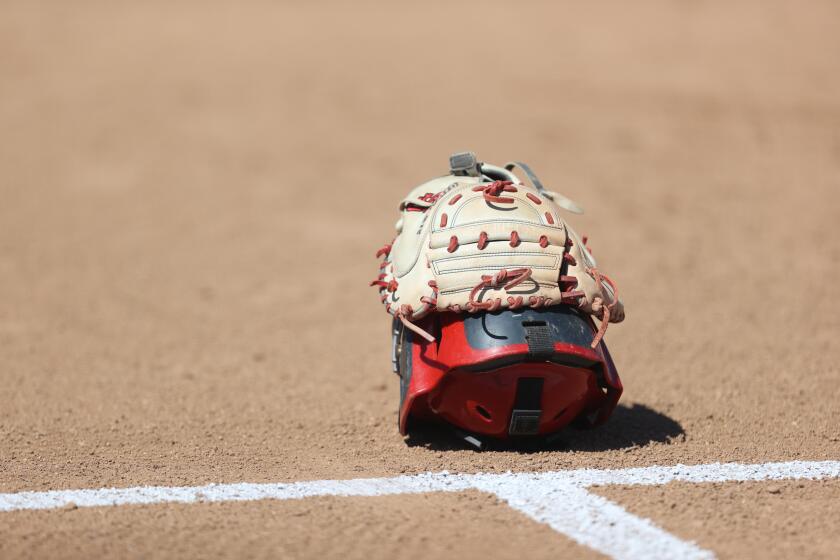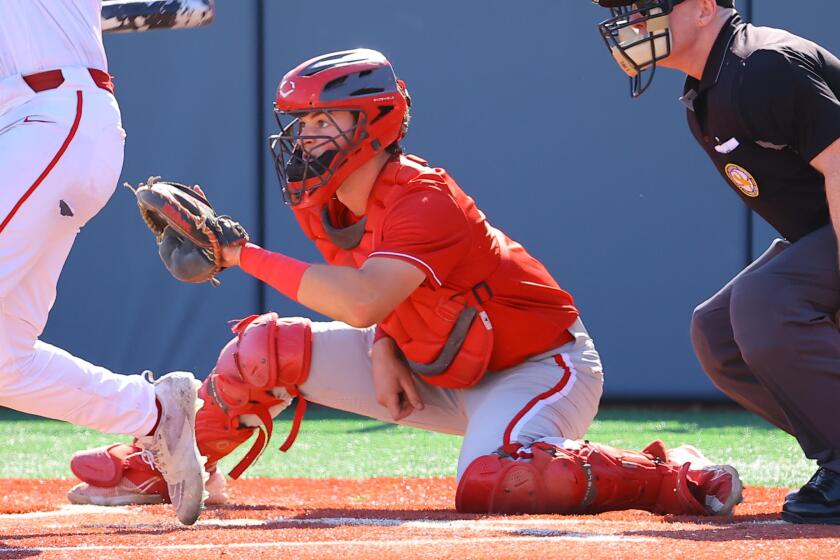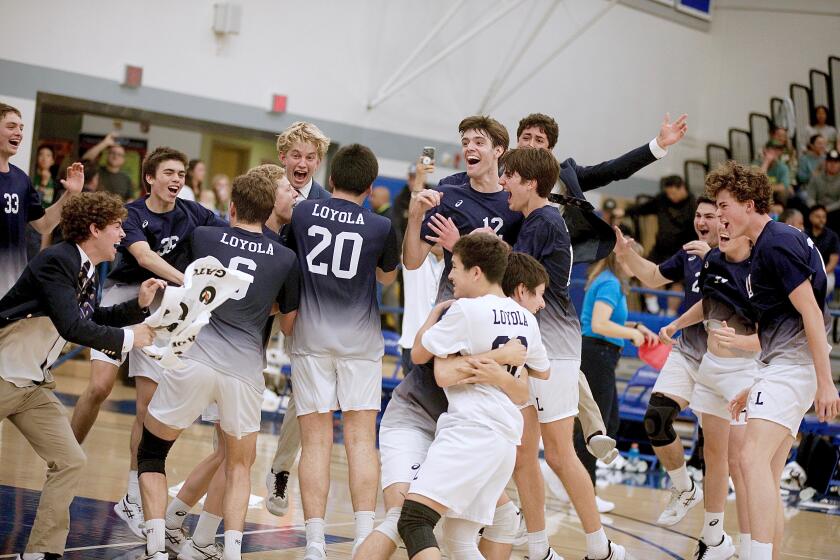For Not-So-Well-Heeled Athletes, a Healing Touch
He was a wide receiver and sprinter in high school and managed to avoid getting hurt.
Now Dr. Clarence Shields is trying to make sure a new generation of athletes stays off the injured list.
Shields, a Loyola High School alumnus, 10 years ago started the Team HEAL Foundation, a nonprofit organization that funds athletic trainers at three high schools in poor parts of Los Angeles. It also provides doctors at their football games.
“The inner-city kids, they don’t have an athletic trainer at the schools, for economic reasons,” Shields said. “They aren’t able to get care. My goal was to try to level the playing field there.”
Shields, a surgeon at the Kerlan-Jobe Orthopaedic Clinic in Los Angeles, said his program has cared for about 3,000 students. The program started at Crenshaw High and expanded to Manual Arts and Banning high schools.Shields, still slim at 64, enjoyed sports in high school but didn’t think a boy of his stature would make it far in athletics. Running was fun, but he had other interests at Loyola Marymount University.
“When I went to college, I was deciding between medicine and engineering,” Shields said. “They give you personality tests, and my personality was better with people than with numbers so I went into medicine.”
After nine years of medical school, residency and a stint in the Army’s medical corps, Shields joined the Kerlan-Jobe surgeons in 1973. The doctors there also served the Los Angeles Rams, and in time high school coaches began approaching him, asking Shields to treat student athletes who didn’t have medical insurance.
“Local high school coaches would bring them over and say, ‘Doc, you need to fix him. He could go to college,’ ” he said.
The problem became clear to Shields. Los Angeles Unified School District couldn’t afford athletic trainers for each school and not every child had medical insurance. Injured athletes either continued to play hurt or couldn’t play at all, damaging their chances at getting athletic scholarships to college.
“In the inner city, athletics is a very important part of education,” Shields said. “To many kids, sometimes it’s all they think about.”
In 1994, as the Rams were preparing to move to St. Louis, Shields thought it was the perfect opportunity to be a physician to the people who really needed him. He founded Team HEAL, with Crenshaw serving as the guinea pig.
“The first [football] game I went to, they had never had a doctor or a trainer before and they kept asking, ‘What are you doing here?’ They wouldn’t believe I was doing it for nothing,” Shields said.
Ten doctors from various clinics and hospitals volunteer at every football game at the three participating schools. There is an athletic trainer present the entire school year, administering to athletes in all sports.
“That’s the best thing that’s ever happened to Crenshaw High School athletics since I’ve been here,” said Robert Garrett, Crenshaw’s head football coach. “It’s really a godsend for us to be blessed with such assistance.”
Before the trainer came along, Garrett said, he had to act as doctor and coach.
“The aspects of making decisions of kids’ health and safety and welfare is enough, but to give a prognosis of an injury on the spot, to make a decision, serves us some liability,” Garrett said.
The athletic trainers treat a range of injuries, but mostly ankle sprains and concussions during football season, said David Berck, Crenshaw’s athletic trainer for the past five years.
The trainers can help rehabilitate the athletes and, during games, recommend whether the student should go back on the field or stay out of the game. If an athlete needs serious medical attention, the athletic trainer can recommend a doctor.
But the trainers also serve another purpose. “It’s not just providing medical services, it’s serving as a role model for some of these kids,” Berck said.
The services provided by Team HEAL -- outlined on its website at www.teamheal.org -- send another message as well:
“It’s really a good feeling to the kids -- ‘Hey, you know, people care about us,’ ” said Ed Robillard, Manual Arts principal. “What we fight here is the students, how they look at themselves. Now that we have a trainer ... that makes them feel good.”
But the process of getting Team HEAL into Los Angeles Unified hasn’t been without problems. Shields said it takes a lot of politicking to establish its programs in a school and to raise enough money.
The program costs $50,000 per school, money that goes to equipment and the athletic trainer’s salary of $40,000.
Shields is a busy man, lecturing at Loyola Marymount University and serving as doctor to different athletic teams. The time commitment and the stress of providing schools adequate services can be exhausting, but Shields carries on.
“When I want to quit, I always see a kid with an injury I could’ve prevented,” he said.
Shields said his parents always taught him there were many opportunities for him, and he wants to give the high school students the same perspective.
“Athletic activities teach you skills for life,” he said. “Obviously you have to play by certain rules, rules you have to abide by in society.”
Shields raised three children and encouraged them to see the world of possibilities his parents showed him. Now, Shields said, it’s time to help the students do the same. “My success are the kids,” he said with a smile. “Even more gratifying to me is to have them show me their diploma, their college degree, and some of them have done that.”
Get our high school sports newsletter
Prep Rally is devoted to the SoCal high school sports experience, bringing you scores, stories and a behind-the-scenes look at what makes prep sports so popular.
You may occasionally receive promotional content from the Los Angeles Times.



